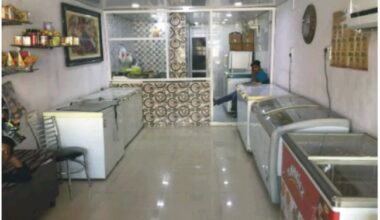How To Make Business Cards – Lots of home business owners overlook the power of a business card, which can be one of the best offline marketing tools you need. When you look at how affordable and portable they are, it makes sense to always have a few on hand. Moreover, making your business cards can be easy and quick. Printing them by yourself is good if you only need a small quantity, or if you have exhausted your regular cards and need a few to tide you over until you order new ones.
If you do not want to go through the expense of having business cards professionally printed, you may be interested in gaining knowledge about how to make business cards at home. While this method will require a little more work than using a professional printing service, your only costs will be cardstock and ink. Read this article to the end to know more about the steps involved in making your business cards to see if it’s a work you want to try.
In this article, we’ll go through everything you need to know about how to make business cards so that you can tell your designer exactly what you want.
How To Make Business Cards
1. Look For Card Ideas
The number one step in learning how to make business cards at home is looking for the most fun—coming up with how you want your card to look! Even if you’re not creative enough, you can use these tips to assist the process.
a. Decide on a Preferred Logo
Whether you have a small business or you’re a slight entrepreneur, you will likely have some symbol or logo associated with your business. Using this image on the card is a good way to create a brand identity.
For a better option, your logo should not be overly complicated. Looking for something simple and memorable will be more effective than a colorful and intense graphic—and it will be easier for your home printer to give you the best result.
b. Choose the Information You Want To Include on the Logo
Your logo is an essential part of your card, but what other information should you put in it? Presented below is a list of must-haves you will want to include, no matter your business or industry:
- Name: Use your full name, and remove quirky nicknames that don’t come off as professional.
- Company name: Your audiences need to know where you work! Put the full name of the company.
- Job title: people need to know what it is you do.
- Contact info: This may be your phone number, email, address, social media accounts, and website, depending on how you prefer audiences to reach out.
Once you have all of these requirements, some additional items might look good if you have the space: - QR code: This is a popular way to publicize more information about your business. Users only need to scan the code on their phones to be directed to your web content.
- Slogan: A catchy phrase or motto can assist add some personalization to your card.
- Headshot: In some industries, e.g real estate, having a headshot is essential for identifying yourself.
c. Pick Your Logo Size
In the US, the standard business card size is 3.5 inches by 2 inches. This is what you’ll want to stick with for your at-home cards because it will be the easiest size to find templates and paper for.
d. Choose a Color Scheme and Font
For a fun and lighthearted business, e.g a bakery or pet walking service, pick brighter colors. For something more professional and serious, such as an accountant or a law firm, go with dark and neutral colors. You will likely be printing on a white or cream business card, so don’t choose pale colors that would be hard to see.
For the font, you will want something that is easy to read and not too overcrowded. Avoid aggressive scrawls, block letters, or decorative fonts, because these can be difficult to detect at a glance. Also, try to use at least a 7-pt. font so everything can be clear.
2. Get a Design App For Your Logo
If you are designing your business cards at home, you probably are not at the level where you know how to utilize Adobe Photoshop or InDesign—and that’s pretty fine! Many other design programs take zero skill to use.
i. Canva
This is a popular design app giving thousands of premade templates for business cards. You can pick from millions of icons, images, fonts, and examples to make your card more flair. If you decide you want to go rogue and create your design from the beginning, Canva permits you to do that as well.
ii. Microsoft Word
Even though Microsoft Word is mainly for written projects, it is also loaded with business card templates you can play with. You can browse the available templates on Office.com—and find templates that are greatly formatted to fit Avery’s business card paper.
iii. Adobe Express
Adobe Express is just a little different from Photoshop and it is free to use. It is loaded with plenty of templates to pick from, along with plenty of customization options. If you run out of the premium plan, you can use branded elements automatically to make things faster.
3. Select Your Paper
Having premium paper for your business cards is great. The preferred thickness of a business card is 14 pt. on the low end and 20 pt. on the high end. 14 pt. is recommended because it will probably work better with your at-home printer.
Because at-home printers are likely not printed on dark paper, you’ll as well want to stick with lighter-toned paper, such as white.
The finish is also an essential consideration. Glossy surfaces can look awesome with more colorful cards, but matte can look even better if you have a perfect text-based variant.
Moreover, you will also likely want to buy perforated business card sheets so that you can just pop out the cards after printing instead of cutting them. Without it, you will need a paper cutter to make sure a crisp, clean edge on your cards.
4. Print Your Business Cards at Home
When printing your business cards, the initial thing you should do is ensure your printer is up to the task. Check the specifications to see the maximum paper weight your printer can handle. If your current printer wouldn’t work, Canon PIXMA PRO-100 is recommended, because it’s specifically intended for heavy cardstock.
Before printing your cards, always do a test first. Print the design on normal paper to ensure your ink is working and the design looks good. Once you’re with the result, you can proceed to print one test card on cardstock. If you are using perforated paper, ensure everything lines up correctly in the rectangle.
Lastly, once it all looks good, you can print on a full page. Avoid printing multiple sheets of cards at once, since your ink can get low and cause lower-quality prints. The thick cardstock paper could as well clump together in the printer, thereby causing a paper jam.
Conclusion
Making your business cards at home takes a little work, but the results can be very rewarding if you invest the time and effort. As long as you utilize solid design principles, pick a template that works with your information, and make use of quality paper as well as printing supplies, you should obtain cards that look nearly as professional as the ones from a printing service.
Frequently Asked Question(s)
How can I make my own business card?
To make your own business cards at home for free, use a free design app such as Canva to create your card, then print it on your own printer. You’ll just need to purchase quality cardstock to print on.
Can I make my own business cards in Words?
You can use Word to create business cards from a template or from scratch. However, if you have Microsoft Publisher installed, that’s your best bet for making business cards. If you’re going to use Word to create your business cards, your next best bet is to start with a template from Office.com
What paper is used for business cards?
While there are many different business card material types, generally, 14 Pt cardstock is the go-to industry standard for most businesses when asked what the best paper for business cards is. It is essentially a thicker and more durable form of printer paper.
Reference(s)
- https://99designs.com/ – How to design a business card: the ultimate guide
- https://www.forbes.com/ – How To Make Business Cards At Home (2023 Guide)
- https://www.thebalancemoney.com/ – How To Make and Print Business Cards at Home






